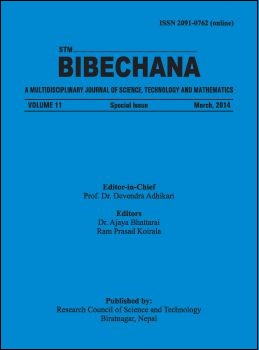Relativity in cosmologically preferred frame and the UHECR paradox
DOI:
https://doi.org/10.3126/bibechana.v11i0.10375Keywords:
Special Relativity (SR), GZK limit, Lorentz invariance violation, Lorentz transformation, Einstein synchronyAbstract
The Greisen-Zatsepin-Kuzmin (GZK) cutoff (5 × 1019eV) of special relativity in the observed ultra high energy cosmic rays (UHECR) spectrum is one of the most puzzling paradoxes in physics. Experimentally a number of cosmic ray events have been detected above this GZK limit which is known as UHECR paradox. We propose a resolution of this paradox through a modification of the relativistic kinematics keeping in mind that it should not lead to predictions different from those of special relativity in the well tested domains. It is shown that theoretical limit in UHECR spectrum can be explained in the framework of Lorentz invariance violation (LIV) theories which assume the existence of a preferred frame. The present paper proposes that the velocity of the solar system with respect to the rest frame of the universe plays a role in explaining the paradox.
DOI: http://dx.doi.org/10.3126/bibechana.v11i0.10375
BIBECHANA 11(1) (2014) 17-24
Downloads
Downloads
Published
How to Cite
Issue
Section
License
This license enables reusers to distribute, remix, adapt, and build upon the material in any medium or format for noncommercial purposes only, and only so long as attribution is given to the creator.




